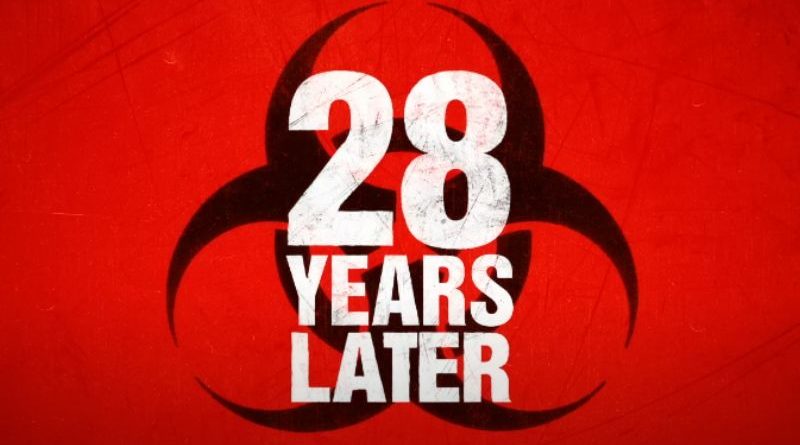28 Years Later: A Revolutionary Return to Post-Apocalyptic Cinema
The long-awaited third installment in the beloved zombie franchise has finally arrived, bringing with it a fresh perspective on survival horror that goes far beyond traditional scares. Danny Boyle’s latest masterpiece represents not just a continuation of a beloved series, but a bold evolution in both storytelling and filmmaking technology.
A New Chapter in the Rage Virus Saga
Nearly two decades after audiences first encountered the terrifying world of the Rage Virus, the franchise returns with a narrative that feels both familiar and refreshingly original. Set three decades after the initial outbreak, this latest entry presents a world that has fundamentally transformed, where both humanity and the virus have undergone dramatic evolution.
The story centers on a survivor community living on a small island, connected to the quarantined British mainland by a fortified causeway. When a young protagonist named Spike embarks on a coming-of-age journey to the mainland, he discovers that the infected have developed into something far more complex and threatening than ever before. These “Alpha” variants represent a new level of intelligence and strength, creating unprecedented challenges for the remaining survivors.
Beyond Traditional Horror: A Deeper Narrative
What sets this installment apart from its predecessors is its ambitious approach to storytelling. Rather than relying solely on jump scares and gore, the film functions as what critics have described as a “disturbing, mythic meditation.” The narrative weaves together political commentary, religious symbolism, and ecological concerns to create a multi-layered experience that resonates on multiple levels.
The transformation of human society proves just as fascinating as the evolution of the infected. New tribal structures and cult-like communities have emerged, reflecting humanity’s adaptability in the face of extreme circumstances. This social evolution provides rich material for exploring themes of trauma, survival, and the fundamental changes that occur when civilization faces existential threats.
Stellar Cast Brings New Energy
The film boasts an impressive ensemble cast that brings both star power and emotional depth to the story. Jodie Comer leads the cast alongside Aaron Taylor-Johnson, Alfie Williams, and Ralph Fiennes, each delivering performances that ground the fantastical elements in genuine human emotion. The involvement of Cillian Murphy as executive producer provides a meaningful connection to the franchise’s origins while allowing new voices to shape its future.
This casting approach successfully balances continuity with innovation, ensuring that longtime fans feel connected to the series while welcoming newcomers to the story. The performances emphasize character development and emotional stakes, making the survival elements feel more impactful and personal.
Groundbreaking Filmmaking Technology
Perhaps one of the most remarkable aspects of this production is its pioneering use of smartphone technology. The entire film was shot primarily using iPhone 15 Pro Max devices, making it the largest-budget Hollywood feature to date captured predominantly on smartphones. This technological choice wasn’t merely a gimmick but served specific artistic purposes.
Director Danny Boyle and cinematographer Anthony Dod Mantle employed innovative techniques, including custom rigs with up to 20 iPhones mounted together. These setups allowed for unique visual perspectives and dynamic action sequences that would have been difficult or impossible with traditional camera equipment. The use of aluminum cages, lens adapters, and drone integration further enhanced the cinematic quality while maintaining the flexibility that smartphone cameras provide.
This approach demonstrates how emerging technology can serve storytelling rather than overshadow it. The visual style feels both intimate and epic, capturing the personal struggles of characters while showcasing the broader scope of the transformed world.
Themes That Resonate Today
The film’s exploration of isolation, societal upheaval, and adaptation feels particularly relevant given recent global experiences. The story examines how communities respond to prolonged crisis, the psychological impact of extended quarantine, and the ways in which fear can reshape entire societies. These themes provide depth beyond the surface-level thrills, creating a viewing experience that lingers long after the credits roll.
The religious and ecological symbolism woven throughout the narrative adds additional layers of meaning. The film suggests that catastrophe can lead not just to destruction but to transformation and, potentially, renewal. This perspective offers a more nuanced view of apocalyptic scenarios than typical genre entries.
Also Read: Bollywood Mourns: Shefali Jariwala, ‘Kaanta Laga’ Star, Passes Away at 42 in Mumbai
Critical and Commercial Success
The film’s reception has been overwhelmingly positive, with critics praising its ambitious scope and mature approach to familiar material. The combination of thoughtful storytelling, innovative filmmaking techniques, and strong performances has resonated with both audiences and reviewers.
Commercially, the project has proven successful, grossing over $103 million worldwide against a $60 million budget. This performance demonstrates that audiences are hungry for intelligent horror that doesn’t rely solely on shock value but offers substantive themes and character development.
Setting Up Future Installments
The film’s conclusion sets the stage for additional entries in what’s planned as a trilogy. Rather than feeling like setup for future stories, the narrative feels complete while naturally opening doors for continued exploration. This approach suggests a thoughtful long-term vision for the franchise that prioritizes story quality over commercial expansion.
A New Standard for Genre Filmmaking
This latest installment represents a significant achievement in post-apocalyptic cinema. By combining innovative technology with mature storytelling, it demonstrates how established franchises can evolve without losing their essential identity. The film succeeds in honoring its predecessors while charting new territory both thematically and technically.
The balance between horror elements and deeper social commentary creates a viewing experience that satisfies multiple types of audiences. Fans of the original films will find familiar elements to appreciate, while newcomers can engage with the story without requiring extensive knowledge of previous entries.
Also Read: Arjun Kapoor Turns 40: A New Chapter with Meaningful Ink and Heartwarming Birthday Wishes
Conclusion: Evolution in Every Aspect
This third installment proves that franchise filmmaking can be both commercially successful and artistically ambitious. Through its innovative use of technology, thoughtful approach to familiar themes, and strong performances, it sets a new standard for what post-apocalyptic horror can achieve.
The film’s success suggests that audiences are ready for genre entertainment that challenges expectations while delivering the thrills they expect. As the planned trilogy continues to develop, this entry establishes a strong foundation for stories that can explore complex themes while maintaining the visceral impact that made the original films memorable.
For entertainment enthusiasts and cinema lovers alike, this represents essential viewing that demonstrates the ongoing evolution of both technology and storytelling in modern filmmaking.
Catch us for latest Bollywood News, Movies Reviews, New Movie Release , and Follow us on Instagram, Twitter, Facebook




